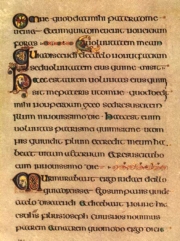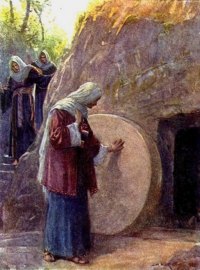 Part 1 of our journey from today’s New Testament back in time to Jesus looked at the problems of translations, canonicity, and finding the best copies. The next problem to crossing this gulf is textual variants. There are 400,000 differences between the thousands of New Testament copies—more differences than there are words in the New Testament. Almost all are insignificant, but thousands of meaningful differences remain.
Part 1 of our journey from today’s New Testament back in time to Jesus looked at the problems of translations, canonicity, and finding the best copies. The next problem to crossing this gulf is textual variants. There are 400,000 differences between the thousands of New Testament copies—more differences than there are words in the New Testament. Almost all are insignificant, but thousands of meaningful differences remain.
Historians use several tools to resolve these differences:
- Criterion of Embarrassment. Of two passages, which one is more embarrassing? We can easily imagine scribes toning down a passage, but it doesn’t make sense for them to make it more embarrassing. The passage that is more embarrassing is likelier to be more authentic. For example, different copies of Mark 1:40–41 has Jesus either “moved with compassion” or “moved with anger” (for more, see the NET Bible comment on this phrase). A copyist changing compassion to anger is hard to imagine, but the opposite is quite plausible. The Criterion of Embarrassment would conclude that “moved with anger” is the likelier original reading.
- Criterion of Multiple Attestation. A claim made by multiple independent sources is preferred over one in a single source.
In addition, a contested passage in an older manuscript is preferred, the one contained in more manuscripts is preferred, and so on.
Notice that these tools need multiple manuscripts to work. They ask: given two manuscripts with different versions of a particular passage, which is the more authentic one?
Consider the long ending of Mark, for example. Given a manuscript of Mark ending with verse 16:20 (version A) and a manuscript ending with 16:8 (version B), the historians’ tools can be applied to determine which is the likely older and more authentic version. But what if you don’t have multiple versions? Suppose we only had Mark version A, with no copies of B and no references to it. Scholars wouldn’t even know to ask the question!
Consider the three most famous of these embarrassing scribal additions: the long ending of Mark, the Comma Johanneum (the only explicit reference to the Trinity in the Bible), and the story of Jesus and the woman taken in adultery. Apologists will argue that these are neither embarrassing nor problems because they’ve been resolved. We know that they weren’t original. But this is true only because historians happen to be lucky enough to have competing manuscripts without these additions. For what added biblical passages do we not have correct manuscripts to make us aware of the problem?
There are consequences. Pentecostal snake handlers trust in the long ending tacked onto Mark (“In my name they will drive out demons; they will speak in new languages; they will pick up snakes with their hands, and whatever poison they drink will not harm them”). What additional nutty demands in our New Testament do we not know are inauthentic?
Of several manuscript categories, our oldest complete copies are Alexandrian manuscripts, including the Codex Sinaiticus and Codex Vaticanus mentioned in the last post. That’s not because they’re necessarily better copies but because they were preserved better. The dry conditions of Alexandria, Egypt preserved manuscripts better than many other places where New Testament documents were kept—Asia Minor, Greece, or Italy, for example. We accept these manuscripts simply because anything that might refute them has crumbled to dust, which is not a particularly reliable foundation on which to build a portrait of the truth.
Read the first post in the series here: What Did the Original Books of the Bible Say?
Next time: The Bible’s Dark Ages
Photo credit: Wikipedia
Related posts:

